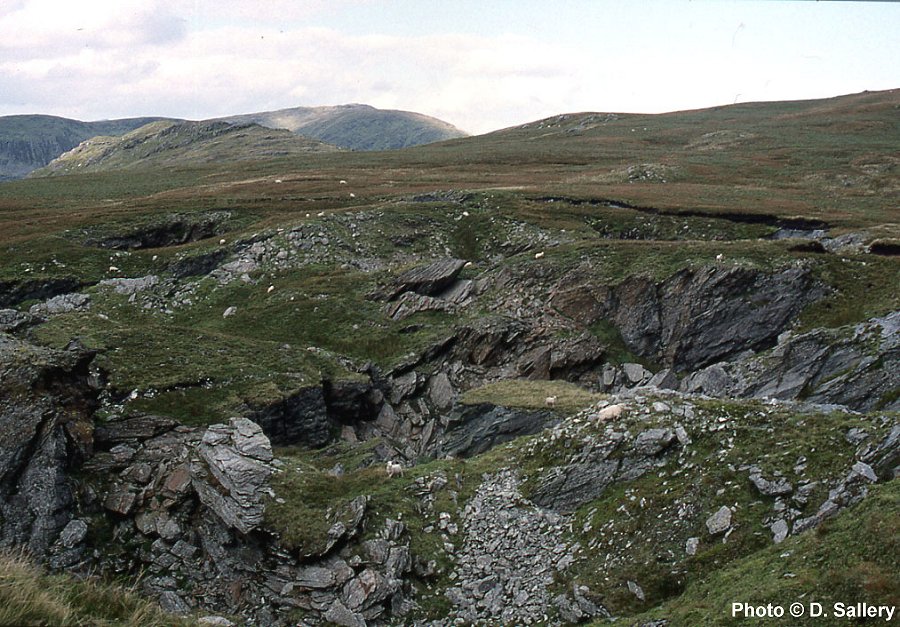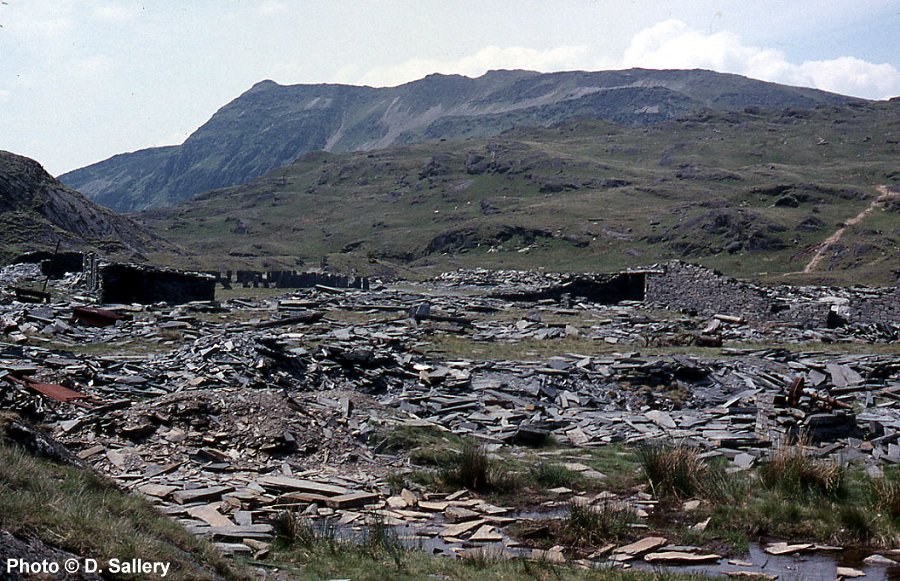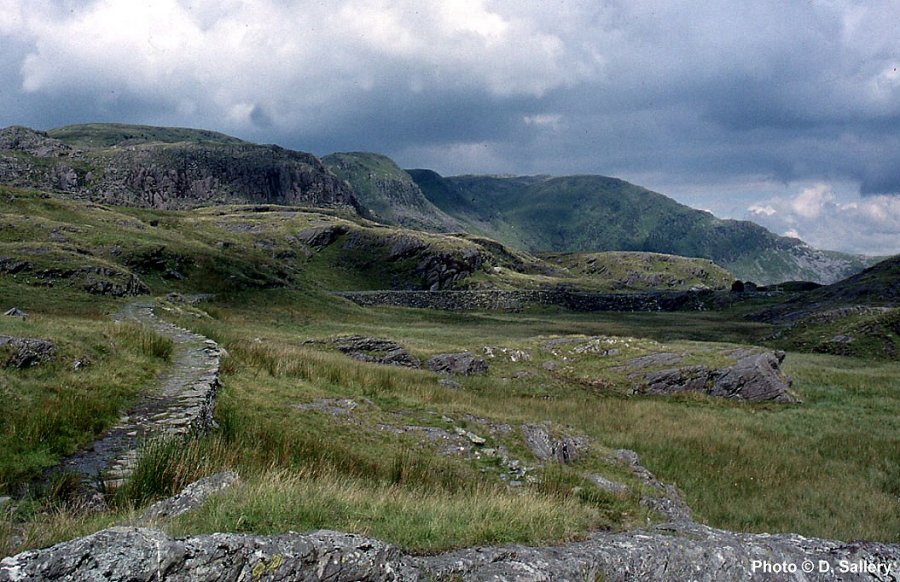
A
brief history of the quarry.
This page may also be
viewed in the Dutch
language
Slate was first discovered here in the 1830's when quarrying commenced on a very small scale. The first major workings were at a site known as the West Twll (twll = pit or hole), begun in the 1840's, about a mile south and nearly 300 feet higher than the final main workings at Bwlch Cwmorthin. This pit was enlarged and deepened over the years to a depth of over 200 feet. As the workings went deeper, adits and tunnels were driven north to win more slate and to drain the workings. A similar but smaller East Twll was also begun a few years later. Eventually the easier won slate became exhausted and the quarry developed into an underground working following the vein of slate northwards and downwards. The quarry developed to encompass 14 floors underground, numbered from the top, with a total of 170 chambers from which the slate was won. As the workings progressed northwards so did a succession of surface workings and access tunnels and it is this aspect of Rhosydd which is part of its uniqueness. In other quarries the development is less easily visible or is obscured by later workings. As an indication of what lies beneath one's feet, the final main workings at Bwlch Cwmorthin are on level 9 and all 5 levels below this are now flooded. (continued)
The West Twll - oldest part of the quarry

This was the first part of the quarry to be developed and has been disused since the 1860's.
The quarry was operated by a string of different owners each developing and enlarging the workings. But the story is not one of steady expansion. The ups and downs of the slate trade, the difficulties of raising capital, geological problems and dangerous underground working practices also brought periods of closure and industrial unrest. Peak output occurred in the 1880's when over 6000 tons per year of saleable slate was mined. This was also the period of greatest employment when over 200 workers were engaged. A major blow to the quarry occurred in 1900 when the "Great Fall" occurred underground, in the south eastern section of the workings. This destroyed a large part of the most profitable reserves. From this major blow the quarry never fully recovered. (continued)
The East Twll - showing evidence of the collapse.

The "Great Fall" of 1900 occurred beneath the East Twll causing the collapse of much of the south eastern part of the underground workings. The cracks and crevices visible on the surface are mute evidence of the forces unleashed underneath.
The first world war brought about a period of complete closure followed by reopening in 1919 and a brief flurry of activity. A slow lingering existence followed until final closure in 1930. However in the hope of the market for slate improving it was decided to keep the underground pumps working. This proved to be a futile gesture and the pumps were finally turned off in 1948 causing much of the underground workings to flood. The life of the quarry had ended and the scrapmen moved in. The final ignominy being the wholesale demolition of many of the quarry buildings to recover the workable slate. This accounts for the ruinous state of much of the surface remains today.

The view on level 9 looking west towards Cnicht.
At some point in the future, life could return to Rhosydd. Planning permission has been granted to untop the underground chambers to remove the slate pillars. This would entail building a new road up Cwmorthin and to extract the slate using modern earth moving machinery. Whether this ever happens depends on many factors, however such a development would change the unique character of this site for ever.
The Rhosydd Tramway - looking towards the quarry

The well preserved trackbed of the tramway is now a footpath. This is the view looking back towards the quarry. Further views of the tramway route may be seen on the Photo Gallery pages.
Continue to: Water - the lifeblood of the quarry